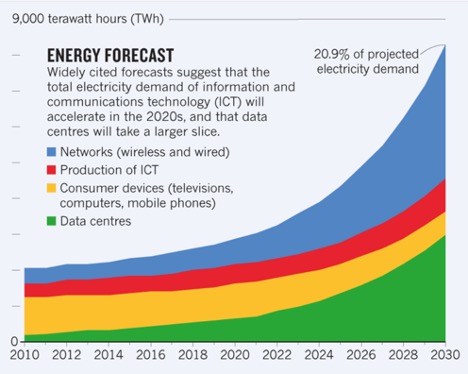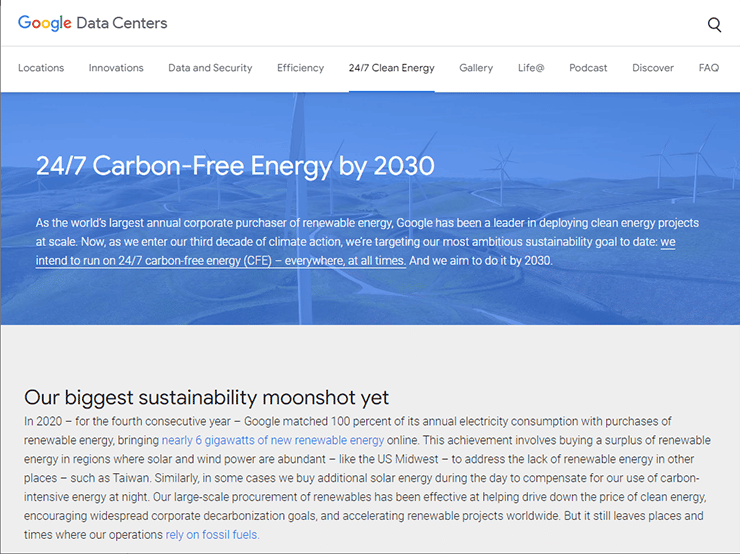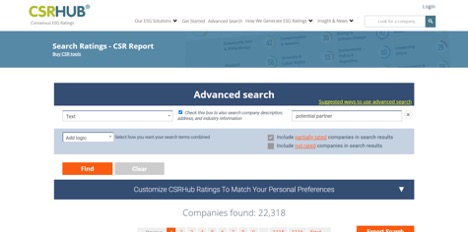What Is a Green Data Center?
Published on September 16, 2021,
by
Definition, Benefits, Examples, and Best Practices
We live in an increasingly digital world, and this has big implications for the environment. Already, data centers consume 3% of all electricity produced around the globe.
And while that sounds like it’s a small piece of the puzzle, the world-wide production of aluminum, one of the most electricity-intensive industries out there, also only uses 3%.
For data centers, this percentage is only set to grow, as experts expect our total data storage and usage to more than double — up to 181 zettabytes — over the next four years.
The good news is that there’s a lot of room for improvement. You can build a data center with much lower power requirements than normal, and also lower other negative impacts on the environment.
In this article, we’ll show you what a green data center is and how you can get there with smart planning and by taking advantage of new technology.
What is a green data center and why should you care?
A green data center is a data center that’s designed for maximum efficiency and minimum impact on the environment.
It optimizes electricity expenditure with better cooling, smarter control systems, greener building materials, and better waste management.
Unfortunately, most data centers are far from green. With locations in hot climates, poor sourcing of energy, and mishandling of water, a poorly planned data center can have a significant impact on the environment, and your bottom line.
Choosing to build a green data center is about more than sourcing your electricity from renewable energy sources.
Why going green is important
There’s a lot of room for improvement out there. For example, 9 in 10 data centers aren’t optimized for “optimal power effectiveness,” and on average, cost businesses an extra $1.4 million per year.
Because of these inefficiencies, some experts project that by 2030, data centers will take up as much as 10% of all electrical supply.

(IMAGE SOURCE)
This overuse of electricity is the big reason that the green data center market is worth $53.19 billion and growing. There’s not only an ethical incentive, there’s a big economic incentive to go green with your next data center.
But it’s not just about electricity, the environmental impact of data centers go way beyond just using less power.
The 3 main considerations when going green
When you’re planning to build a new or transition into a green data center, there are three main considerations:
- E-waste: the average data center produces a lot of electrical waste over the course of its lifetime. A green data center works to minimize the impact of this waste by actively partnering with recycling centers. No server hardware should end up in a landfill in a third-world country.
- Water conservation: data centers in the US are already using 9 billion litres of water every day. And this number will only rise with the increase in demand.
- Co2 emissions: from the electricity that keeps the data center running, to the supply chain you rely on for your hardware, you should work to minimize greenhouse gases. For example, reducing your consumption of electricity generated by fossil fuels.
What are the key elements of a green data center?
If you want to go green, you have to consider different aspects like site selection, materials, life-cycle management, and more.
- Site selection: placing your data center in a location where you can get ideal performance for minimum impact.
- Materials and equipment: choosing carbon-neutral or minimally damaging materials for building the data center.
- Life-cycle management: ensure all equipment is properly recycled to not contribute to the growing e-waste problem.
- Integrated data center management (IDCM) systems: A smart IDCM uses AI-powered algorithms to optimize power usage, temperatures, climate control systems, and more.
- Energy usage and sourcing: strive to use as little power as possible from renewable energy sources.
- Water conservation: sourcing and handling water with the environment in mind.
Green data centers naturally have lower energy consumption because of smart site selection, but that’s only the starting point.
Every working element that goes into the data center — from the smallest piece of hardware to the concrete used in its walls — is carefully chosen to minimize environmental impact.
Green design and smart solutions improve energy efficiency and help reduce the carbon footprint.
To help you understand what this looks like in real life, let’s take a closer look at some examples.
Green data center examples
In this section, we explore some examples of companies taking responsibility for their climate impact, and setting up green data centers.
Facebook’s Luleå data center in Sweden
The Luleå data center in Sweden is the perfect example of how site selection is crucial for a green data center.
By utilizing the naturally cold environment in its cooling processes, they’re able to reduce their reliance on energy-intensive cooling.

(IMAGE SOURCE)
This leads to excellent Power Usage Effectiveness (PUE), even without taking other measures into account.
Instead of having to forcefully cool hot water in a warm climate, working with air and water that’s already cool makes cooling a lot less energy intensive.
Of course, it’s not just the location that makes it green. It also sources its energy from green sources, and sourced equipment from environmentally-friendly suppliers. But again, this is a lot easier in Sweden, where 56% of all energy production comes from renewable sources.
Google reduces e-waste through recycling and aims for 100% carbon-free energy supply
Rather than a single data center, Google is becoming a green example to follow in the cloud computing sector.
Google actively recycles all e-waste produced by their data centers, and even plans to go 24/7 carbon free (including back-up power) by 2030.

24/7 Carbon-Free Energy by 2030
(IMAGE SOURCE)
In most data centers around the world, the back-up power supply is powered by fossil fuels, typically something like a diesel generator.
In addition, Google uses machine learning tools to optimize power consumption in Google data centers by 30%.
In these areas, Google is a great example to follow for any company that wants to go green.
How do you make a green data center?
As climate change worsens, sustainability is moving away from a “nice-to-have” to a priority for businesses around the globe.
Follow the steps outlined below to become part of the solution.
Start in the right location
If you’re going green, you need to consider location beyond the scope of minimizing latency.
You should try to find a location that checks the following boxes:
- Naturally cool
- Little pollution and stable climate — air with little dust and moisture means less work for the climate control system, and less risk of damaged equipment.
- Adequate water supply
- Access to green energy sources
- No natural disasters — avoid areas prone to mudslides, earthquakes, floods, etc.
- Local building codes that allow your use of green materials and design.
- No vibration — avoid sites close to railroads, major highways, and construction sites.
By choosing the right location, you can minimize power consumption, risks of equipment damage and failure, and more.
Source materials and equipment from carbon-neutral sources
It may seem like an impossible task to try to verify the social impact of each potential supplier yourself. But luckily, you don’t have to hire any private investigators or read endless reports.
You can use ESG (environment, social, governance) ratings to evaluate whether a company is a valid green partner.
For example, you can easily use an online database like CSRhub to check companies’ corporate social responsibility (CSR) scores

By doing your due diligence here, you can minimize the lifetime impact of this and all future data centers your company sets up.
Take advantage of the latest technology
Instead of manually managing your cooling systems, you should take advantage of machine learning.
Use a smart IDCM that can automatically adjust local temperatures based on actual server loads and temperatures.
Don’t waste electricity on servers that are hardly used, and don’t risk damaging servers that are starting to get too hot.
Plan for the entire lifecycle of all your equipment
If you simply throw away every defunct server, memory card, or fan, your data center isn’t green.
So make sure you partner with reputable recycling companies that can handle your used equipment.
E-waste is strictly regulated in many western countries, so a plan for recycling and managing this waste may even be required by law.
Again, this is easier with a smart IDCM system that can track the performance of your equipment over time, letting you know when it’s time to replace something.
